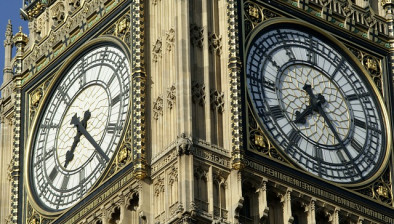NI High Court: Attorney General erred in refusing fresh inquest after evidence of falsified testimonies

Northern Ireland’s High Court has found that the Attorney General had applied the wrong test in assessing whether a fresh inquest should be granted into the British Army killing of Thomas Aquinas Burns.

About this case:
- Citation:[2022] NIQB 18
- Judgment:
- Court:NI High Court
- Judge:Mr Justice Michael Humphreys
Leave to judicially review his decision was granted where it was found that the Attorney General had not responded to alleged false testimonies, and where he had not fully investigated fresh evidence before him.
Background
Thomas Aquinas Burns was shot and killed by a member of the British Army outside the Glenpark Social Club in North Belfast on 13 July 1972. An inquest was held on 3 April 1973, where the killing was determined to have been merely “misadventure”.
The area was lit up by arc lighting from the Army position on Glenpark Street and patrons often asked soldiers to switch off the light to allow them to walk home without being vulnerable to attack by loyalist gunmen.
The deceased made such a request, but shortly afterwards he was fatally shot by one of the soldiers.
The initial “investigation” was carried out by the Royal Military Police (RMP), as was practice in Northern Ireland at the time, where crimes committed by British Army soldiers were investigated by the army, rather than the police. The court noted that this was a “wholly improper and illegal arrangement”.
The RMP investigation took statements from Soldiers A, B and C. Soldier B stated that he saw a gunman with a pistol in hand outside the club, firing at an observation post. He fired twice at the gunman and hit him.
Soldier C was the “witness” and whilst he did not say in his statement that the gunman was firing at the other post, he did say that Soldier B shot twice and struck the deceased.
However, civilian witness statements claimed that the deceased did not have a gun, and simply asked for the Army arc lighting to be turned off, whereupon he was shot.
The applicant, his daughter, wrote to the Attorney General’s Office (AGO) in 2015, seeking a fresh inquest under section 14 of the Coroners Act (Northern Ireland) 1959.
The then AG, John Larkin QC, refused the applicant’s request and did not direct a new inquest. This decision was under challenge in these proceedings.
The original inquest
The soldiers’ statements were handed to the coroner in a sealed envelope, and none of the soldiers attended or gave evidence.
Only five possible verdicts were available to the inquest jury – died from natural causes; died as the result of an accident/misadventure; died by his own act; execution of sentence of death; or open verdict. The verdict of misadventure was signed by the coroner and the seven members of the jury.
Due to the limited options, there was no scope for the jury to deliver a verdict of lawful or unlawful killing. The court noted, however, that this verdict was wrong in law, and here the only option for an inquest jury was to return an open verdict.
The HET report
Many years later, the death was reviewed by the Historical Enquiries Team (HET). During this review, Soldier C informed HET that the statement given to the inquest was not his and did not represent a true account of events.
However, the HET report was also very flawed, as noted by the court. The report mistakenly claimed that the original inquest returned an open verdict, confused the roles of Soldiers A, B, and C, and disregarded the witness statements which claimed that Mr Burns did not have a gun in his possession.
Application to the Attorney General
Following the HET report, the applicant wrote again to the AGO. On 24 July 2017, the AGO communicated that the AG did not consider that a new inquest was advisable at that stage.
A pre-action protocol letter was then sent on 22 March 2019 and, on foot of this, the AG agreed to reconsider his decision.
The AG concluded that an inquest was not advisable, as although the verdict was erroneous, that did not, he claimed, warrant a new inquest, as there was no real prospect of establishing what happened.
Illegality
In reviewing the decision of the AG, the court considered first the question of illegality.
Section 14 of the 1959 Act allows the AG to seek an inquest where he has reason to believe that the deceased died in circumstances which make an inquest advisable.
The applicant argued that the AG erred in not ordering a fresh inquest where the original verdict was wrong in law. Further, he applied the wrong test when considering if there was a “real prospect” of establishing what happened.
The HET report revealed two key pieces of new evidence: firstly, the location of the soldiers when shots were fired and secondly, the veracity of the statements taken by the RMP.
The court found that it was at least arguable, in circumstances where it was accepted that the original inquest verdict was unlawful, that the test to be applied in relation to fresh evidence was whether there was a real possibility of a different verdict. Leave to judicially review the AG’s decision was therefore granted.
Material considerations
In assessing the AG’s decision, the court was aware that the AGO never addressed the claim that statements had been fabricated. On that basis, it was arguable that the AG failed to take into account a material consideration.
That fact, the court found, “calls for further investigation in its own right”.
The decision of the AG was also based on the proposition that the “shooter” would be entitled to invoke the privilege against self-incrimination and decline to answer questions at an inquiry.
However, the court noted that the Court of Appeal recently held in M4 v Coroners Service [2022] NICA 6, that the proper course of action is for a witness to be compelled to attend to give evidence and the privilege invoked, if sought, at an appropriate time. The AG also failed to take this into account.
Finally, the AG made reference to an unidentified “gunman”, which was referenced in the flawed HET report. On the sworn evidence of the civilian witnesses, there was no such gunman. It was therefore arguable that the AG failed to have proper regard for all of the evidence available to him.
Conclusion
Leave to apply for a judicial review of the AG’s decision was granted, on the grounds of illegality and the failure to take material considerations into account.








